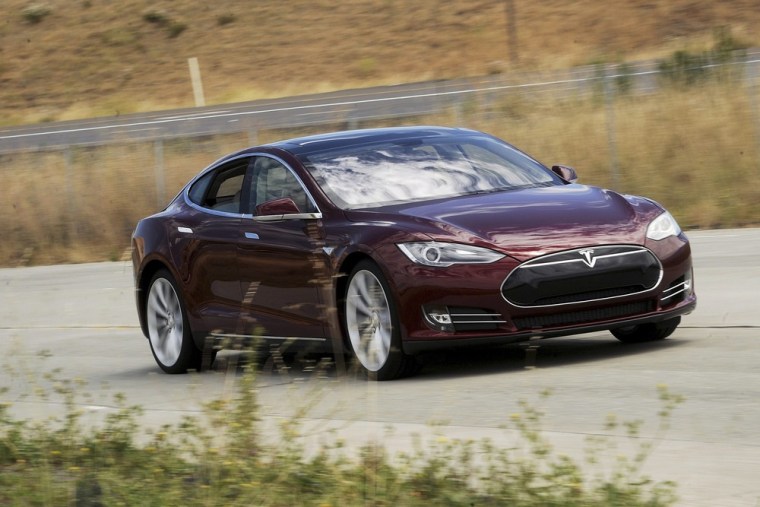Electric car maker Tesla Motors has shifted into a good place: CEO Elon Musk intends to use the potential $1 billion from a new stock offering to pay off the maker’s $465 million in Department of Energy loans – and to help pay for other products that would grow the California automaker.
Musk, who uses tweets to signal his plans, has hinted that he will formally announce the payoff of the loans tomorrow. Such a move, coming nine years ahead of schedule, could save Tesla significant interest costs even as taxpayers receive as much as a $12 million profit. That would provide the Obama Administration a rare success in the highly controversial Department of Energy loan program.
"Given govt loan repayment this week (prob Wed), Supercharger update will be next week," Musk tweeted.
Tesla recently reversed course, announcing plans for a new stock offering that initially was expected to generate around $800 million in cash. But as the Palo Alto-based firm’s shares surged from around $34 a share to more than $92 since March, Tesla plans to boost the size of the offering by 30 percent, or to more than $1 billion.
As for those other projects, after paying off the Energy Department loans: A Model X crossover, due out in 2014, to accompany the current Model S sedan. Musk has long promised to introduce a smaller, less expensive vehicle that could increase Tesla sales significantly by targeting a more mainstream market. But Musk has also hinted at other options, perhaps even an electric pickup truck.
Tesla’s upcoming stock offering follows a string of successes for the company. The Model S recently received one of the highest ratings ever by Consumer Reports magazine, 99 points out of a possible 100.
Read more about Consumer Reports’ review of the Tesla Model S
That is expected to give further momentum to sales that already well exceeded Tesla’s initial expectations – helping deliver a first-quarter profit – Tesla’s first ever – of $11.2 million on revenue of $561.8 million.
Read more about Tesla’s first-ever profit and plans
Sales could grow significantly, Musk has indicated, with the launch of sales in Europe and Asia during the third quarter of this year – and then with the addition of the Model X on track to debut during the final quarter of 2014.
Musk has repeatedly turned to Twitter and other social networks to build momentum – announcing a variety of moves aimed at building customer loyalty and confidence – no mean feat considering the general skepticism about battery propulsion.
Among the recent moves: A hybrid loan/lease program allowing buyers to return their Tesla vehicles for a guaranteed value, and a no-fault warranty program for the Model S battery pack.
Despite Musk’s unbridled optimism, there remain skeptics, perhaps for good reason given the problems facing the nascent battery-car market.
Two other California start-ups have collapsed in recent weeks. Coda filed for Chapter 11 protection, and senior company officials suggested during Congressional hearings earlier this spring that Fisker Automotive may follow suit. Despite drawing down $192 million of a larger loan from the Energy Department, Fisker has so far sold only about 2,500 Karma plug-in hybrids. The company has no cash left to finish development of the second, more mainstream model it hoped would buoy its balance sheet.
Read about the latest on Fisker’s folly
Skeptics note that despite Tesla’s recent successes, plug-in vehicles account for barely 0.5 percent of the total U.S. new vehicle market. Even adding in more conventional hybrids, such as the Toyota Prius, the figure is still just 3 percent. But proponents hope that with more products coming to market, and with a rapid increase in the number of public charging stations, demand could grow substantially over the next several years.
Read more: The 100,000th plug-in vehicle sold in the U.S. market
Fisker's impending collapse -- it has already dismissed three-quarters of its staff -- has put the spotlight on the Energy Department loan program that was intended to help encourage the development of low-emission, high-mileage vehicles. There have been several other notable failures, including the bankruptcy of lithium-ion battery supplier A123. But the White House is likely to point to Tesla's early payback as a counterpoint, a much-needed success story.
Paul A. Eisenstein contributed to this report.
